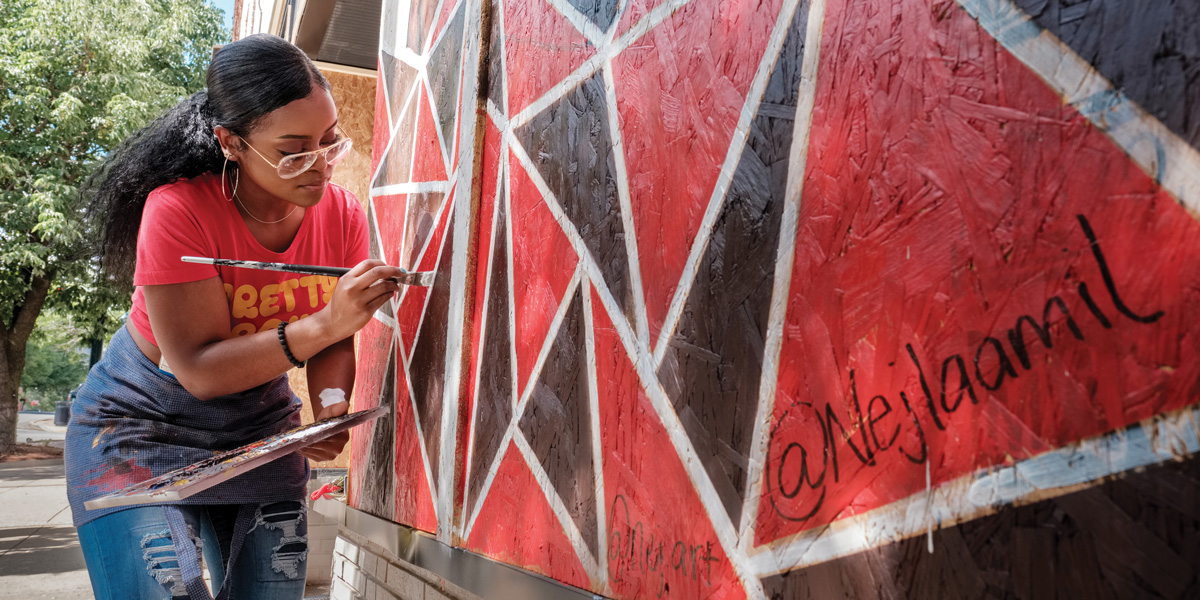If you were walking on South Elm Street on June 22, you’d have seen Nejla Harris putting final touches on her art work: the faces of two Black males.
“Breathe for those who don’t get a chance to.” – Londrelle
“Black love, Brown pride.” – Nipsey Hussle
These quotes set the tone for Nejla’s mural: the first referencing the horrific murder of George Floyd and the second sending a message of unity.
When the BLM protests ended last summer, Nejla didn’t wait for an invitation.
[su_image_carousel source=”media: 3032,3029,3030,3031″ limit=”4″ slides_style=”default” controls_style=”dark” crop=”1:1″ columns=”2″ adaptive=”yes” spacing=”yes” align=”none” max_width=”none” captions=”no” arrows=”yes” dots=”no” link=”none” target=”blank” autoplay=”5″ speed=”medium” image_size=”full” outline=”yes” random=”no” class=””]
After seeing artists downtown, she called her friend Ryan Oakley – a Wake Forest University alumna who’d taken UNCG summer courses. They picked a plywood wall, and went to work. They composed separate pieces, which
together formed “To Be Black Is: Black Men & Black Women.”
People of color are a common theme of Nejla’s art. She’s always taken an interest in Black history, and at UNCG she’s pursuing a minor in African diaspora studies to complement her degree in interior architecture – noting she didn’t want to study art because it’s too personal to her.
“I used to do a lot of art with Caucasian and light-skinned people because that’s who I was around more when I grew up. But as I started studying African American history on my own time, I realized this is a very big part of me,” she explains.
When Trayvon Martin was killed, she was young, but she started taking note of the movement that was brewing, as Black men and boys continued to be gunned down by police and self-styled vigilantes. And as she got older, she saw many of her childhood friends – who lived in less affluent neighborhoods than she did – deal with drugs, gangs, gun violence, and even police brutality.
“Seeing how society affects Black kids, especially, at such a young age, is what hit home for me. I always wanted to do something, and now it’s more clear to me how I can help,” says Nejla.
“I think I’ve earned the title of an activist now, which is something I feel good about.”
By Brittany Cameron
Photography by Martin W. Kane
